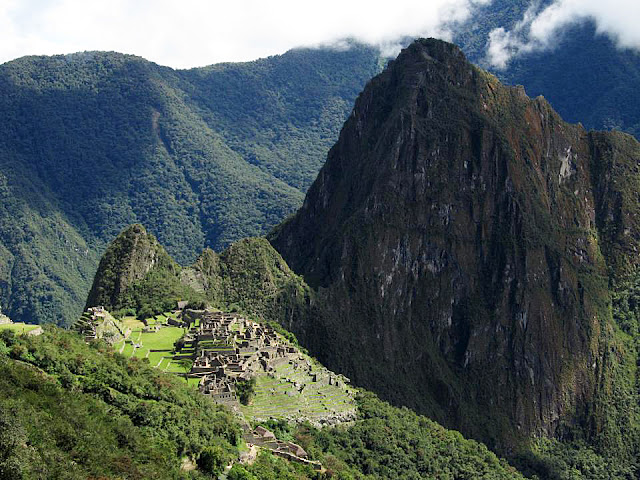How long does it take?
It takes around 1.5 hours to ascend and another 45 mins - 1 hour to descend.
INC (Peru's National Cultural Insitute) restrictions:
To prevent the deterioration of the mountain paths and the citadel, the INC implemented a restriction on the amount of people that can climb Wayna Picchu to 400 people each day. They also restricted the times someone can climb the mountain to 2 groups: a morning group, between the times of 7-8 am and the second from from 10 am-11 am. This means that the first group need to have reached the bottom of the mountain again by 10 am and the second group have to have returned by 1 pm, though as many people like to take their time and enjoy the stunning views at the top, this is rule is seldom abided by. Only 200 people are allowed to climb during each time slot. Children under the age of 12 are not permitted to climb Wayna Picchu.
Should I climb in the first or second time slot?
Ascending in the morning slot means that there are no tourists descending as you are climbing up and the top of Wayna Picchu will be significantly quieter as well. However, as the non-trekkers arrive on the train at 11 am, you will end up exploring the ruins of Machu Picchu at peak time and have to contend with the mass crowds. If you choose to climb in the afternoon, you have the quieter morning period to explore Machu Picchu, though as you are climbing Wayna Picchu, there will be people coming back down. Most people however, would recommend climbing in the afternoon, as it reduces the chances of there being fog obstructing the views and once you have descended the mountain, most people in the citadel will have departed to grab some lunch.
When should I purchase my ticket for Wayna Picchu?
Wayna Picchu is an extremely popular addition to Machu Picchu. Therefore, it is best to get your ticket at least 2-3 months before the climb (closer to 3 months in high season). Particularly in low season, it may be possible to acquire a ticket closer to your travel date than this, however it can never be guaranteed that there will be tickets available for the date that you wish to go.
What if I don't get a ticket?
It is not possible to purchase a ticket for Wayna Picchu at Machu Picchu. It must be done in advance. Even trying to purchase a ticket in advance cannot guarantee that it will not already be sold out. But don't panic! There are some alternatives that you could take a look at.
Machu Picchu Mountain
Like Wayna Picchu, this mountain requires a permit that you can buy as an add on with your original ticket. The mountain lies opposite Wayna Picchu on the other side of the citadel. The views are equally as spectacular and because it is lesser known, there is a much smaller crowd to contend with. It takes around 2 hours to reach the summit and another hour to descend. Permits for this mountain are from 7 am-11 am. Though some people say that the best time to climb is late morning as you have the morning to explore the citadel before the crowds arrive and still have time to climb the mountain before the site closes for the night.
Putukusi Mountain
For those spending a couple of days in Aguas Calientes, you can climb the Putukusi Mountain. However, this is no easy task and is significantly harder than the other two treks. The ladder sections of the trek can be incredibly daunting therefore this trail is only suggested for those experienced trekkers looking for a bit of adventure. To get to Putukusi Mountain, you follow the train tracks from Aguas Calientes towards Machu Picchu until you see a sign that guides you towards the trail. It takes around 2 hours to climb and around the same time to get back down due to the dangerous steps and ladders. No permit is required for this trek, and despite the amazing views at the summit, this trail is generally deserted or extremely quiet. It is not recommended for those who do not have a good level of fitness and/or are afraid of heights.
Inti Punku (The Sun Gate)
For those who are visiting Machu Picchu via the Inca Trail, this is one of the first sites you will see. Many people coming to Machu Picchu via alternate routes or by train, backtrack down the Inca Trail from the citadel to be at The Sun Gate to watch the sun rise. The hike takes about 1 hour each way, though the hike from the citadel to Inti Punku is a tough uphill hike and can be a little challenging. You do not need an additional permit to hike to The Sun Gate as it is included in your entry ticket to Machu Picchu.
So if you are planning your trip to the World Wonder of Machu Picchu, why not add one of these extra adventures to your itinerary?

















